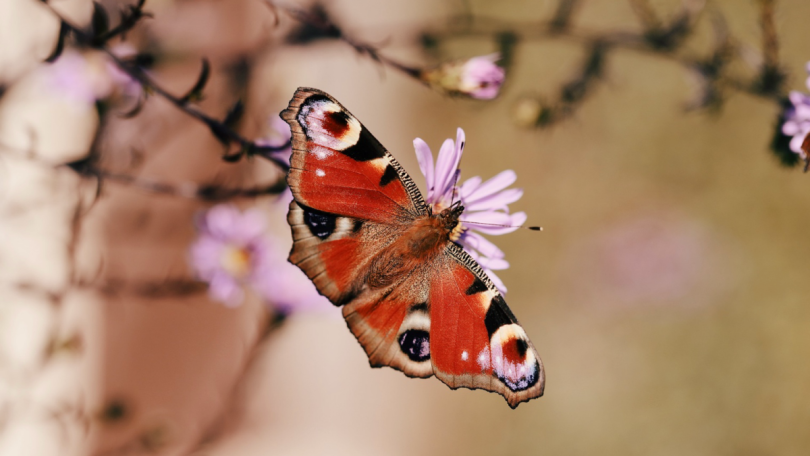There’s a wonderful opportunity for you to enhance your home environment while supporting vital pollinators by creating a butterfly garden. In the lush tropical climate of Singapore, you can cultivate a vibrant space filled with colorful flowers and plants that both attract butterflies and provide a habitat for other beneficial insects. This guide will walk you through the best practices and plant choices to help you transform your outdoor area into a thriving ecosystem, enriching your garden and your local environment alike.
Understanding Butterflies and Their Needs
To create a thriving butterfly garden, it’s important to understand what butterflies need for survival and reproduction. They rely on specific elements in their environment that cater to their life cycle, including proper habitats for laying eggs, suitable plants for caterpillars, and ample nectar sources for adult butterflies. By catering to these needs, you can attract diverse butterfly species to your Singapore home and enjoy the beauty and ecological benefits they bring.
Essential Habitat Elements
About butterflies’ habitat needs include sheltered areas for resting, unfenced landscapes for unobstructed flight, and native plants to support their life cycles. By incorporating these elements into your garden, you will provide the ideal environment for butterflies to thrive, ensuring they have the resources they require at each stage of development.
Food Sources for Butterflies
After understanding the habitat needs, providing appropriate food sources is the next step in attracting butterflies to your garden. Adult butterflies primarily seek nectar from vibrant flowers, while caterpillars depend on specific host plants for nutrition as they grow and metamorphose.
At your garden, you should consider planting native flowering plants that bloom in succession throughout the year to provide continuous nectar sources. Additionally, include host plants such as passion vine or dill, which serve as food for caterpillars. A well-planned combination of nectar-rich and host plants will create a nurturing environment that supports both adult butterflies and their larvae, enhancing the vibrancy of your butterfly garden.
Choosing the Right Plants
Assuming you want to create a thriving butterfly garden, selecting the right plants is imperative for attracting pollinators. Choose a mix of nectar and host plants to provide food and breeding grounds for butterflies. Opt for diverse flora to create a vibrant environment, and consider the sunlight and space available in your garden to ensure healthy plant growth.
Native Plants for Singapore
Plants that are native to Singapore are often the best choice for your butterfly garden as they are well-adapted to the local climate and soil conditions. By incorporating native species, you create a more sustainable garden that supports local ecosystems and attracts indigenous butterfly species, contributing to biodiversity.
Flowers That Attract Butterflies
Plants such as lantana, zinnias, and milkweed are particularly effective in drawing butterflies into your garden. These flowering plants provide imperative nectar that butterflies crave, while also creating a visually appealing landscape.
Due to the preference of butterflies for certain colors and scents, planting a variety of brightly colored flowers can yield better results. Consider adding clusters of flowers in shades of yellow, orange, and purple, as these hues are particularly attractive to many butterfly species. Additionally, ensure that you have a steady supply of blooms throughout the year to continuously feed your visiting pollinators.
Garden Layout and Design
Clearly, when planning your butterfly garden, thoughtful layout and design are necessary for creating an inviting space. Begin by mapping out different zones, incorporating various heights and plant types to foster diversity. Use natural curves and pathways to guide the flow, avoiding rigid lines that may feel unwelcoming. Position flowering plants and nectar sources in clusters to encourage butterflies to visit, and ensure there are sunny spots for these creatures to bask. Don’t forget about providing shelter through hedges or taller plants to create a safe haven.
Creating a Welcoming Environment
Welcoming butterflies into your garden requires creating a habitat that meets their needs. Utilize a mix of native plants to provide food and shelter while ensuring that you choose species suitable for your local climate and soil conditions. Incorporate water features, like shallow dishes filled with stones, to offer hydration. Plant in groups rather than single specimens to attract more pollinators and create a cohesive look. Finally, consider adding seating areas for you to enjoy the beauty of your butterfly visitors.
Combining Aesthetics with Functionality
On the journey to make your garden not just attractive but also functional, it’s important to select plants that serve multiple purposes. Choose vibrant blooms that cater to butterflies while harmonizing with your overall garden design. Use native flowering plants that thrive in Singapore’s climate, ensuring a lower maintenance garden that brings beauty and biodiversity. Additionally, create layers in your garden by planting tall species at the back and shorter ones at the front, allowing you to appreciate the entire space while catering to the needs of different pollinators.
For instance, incorporating plants like milkweed, lantana, and zinnias not only adds vibrant colors but also provides necessary nectar sources for various butterfly species. Furthermore, perennial plants can offer year-round visual appeal while reducing the need for replanting each season. By combining blooming times and colors, you can ensure that there is always something in flower, thus attracting butterflies throughout the year. This thoughtful integration of aesthetics and functionality will ensure your garden not only looks beautiful but also serves as a thriving habitat for butterflies.
Maintenance of Butterfly Gardens
Once again, maintaining your butterfly garden is important to ensure a thriving ecosystem. Regularly check your plants for health and vigor, and prune back any overgrown areas to allow sunlight to reach all parts of the garden. Ensure that you are aware of the water needs of the plants, especially during dry periods, and keep your garden free of debris to prevent pests from taking hold.
Seasonal Care Tips
Care for your butterfly garden through the seasons by following these seasonal tips:
- Spring: Plant new flowers and trim back dead foliage.
- Summer: Water regularly and provide shade for delicate plants.
- Fall: Collect seeds from flowering plants and prepare for winter.
- Winter: Protect seedlings and cut back perennials to help them grow in spring.
Assume that consistent care will lead to a vibrant garden filled with butterflies.
Pest and Disease Management
At times, pests and diseases can threaten the health of your butterfly garden. It’s important to monitor your plants regularly for signs of infestations or illnesses and take action swiftly to minimize the impact. Natural remedies, companion planting, and attracting beneficial insects can greatly help in managing these issues without harming butterflies.
Further, keep an eye out for common pests such as aphids and caterpillars, which can harm your garden. You can use insecticidal soap or neem oil as organic treatments to handle infestations. Establishing a diverse planting scheme will also encourage natural predation of pests while ensuring that your plants remain healthy and attractive to pollinators. By integrating good practices in pest management, you can maintain a thriving butterfly haven in your garden.
Attracting Other Pollinators
Despite your focus on butterflies, your garden can also invite a variety of other beneficial pollinators. Incorporating diverse plant species that bloom at different times can attract bees, moths, and even birds. Consider including native flowering plants that thrive in Singapore’s climate, enhancing the ability of your garden to support various pollinators. The more diverse your plants, the more likely you are to create a thriving ecosystem that supports all types of pollinators.
Bees, Moths, and Beyond
Bees are not only imperative for pollination but also play a significant role in maintaining the health of your garden. By planting flowers with different colors, shapes, and sizes, you can provide food sources for both native bees and moths. Make sure to include a mix of perennials and annuals to offer nectar and pollen year-round, thus attracting these vital creatures to your environment.
Creating a Biodiverse Ecosystem
After establishing a solid foundation of butterfly-friendly plants, you should consider expanding your garden’s biodiversity to attract additional pollinators. This means including a variety of plants that serve different ecological functions, like ground covers, shrubs, and trees, to create layers within your garden. Such layers not only provide shelter and nesting sites for pollinators, but also create a more visually appealing landscape that supports a wider range of wildlife.
Pollinators thrive in environments rich with variety. By introducing native plants, you can ensure that your garden provides the right habitats and food sources for different species. Aim for a mixture of flowering plants that bloom at various times, creating a continuous banquet throughout the seasons. By nurturing a biodiverse ecosystem, you not only enhance the beauty of your garden but also contribute to the local environment, fostering a supportive habitat for numerous pollinators.
Engaging with the Community
For those who wish to enhance their butterfly garden experience, engaging with the community is highly rewarding. By sharing your journey and knowledge, you can inspire others to create their own vibrant pollinator-friendly spaces. Collaborating with local groups fosters a sense of camaraderie, furthering the vision of sustainable gardening practices and pollinator conservation in your neighborhood.
Sharing Your Butterfly Garden
Butterfly gardens are a beautiful testament to your hard work and dedication, making them perfect for sharing with friends, family, and neighbors. By opening your garden to others, you not only showcase your gardening skills but also educate visitors about the importance of pollinators in our ecosystem. Consider hosting small informal tours to inspire others to cultivate their own butterfly-friendly habitats.
Hosting Workshops and Tours
With your growing expertise in butterfly gardening, you can take it a step further by hosting workshops and tours. These events allow you to provide hands-on guidance, sharing tips on plant selection, garden design, and maintenance. Engaging with participants fosters a knowledgeable community that values biodiversity and supports local pollinator populations. Furthermore, these gatherings are an excellent opportunity to network with other gardening enthusiasts and exchange ideas at W Residences Marina View.
Garden workshops and tours offer practical experiences, enriching participants’ connection to nature. As you guide attendees through your butterfly garden, you can demonstrate effective planting techniques and habitat creation strategies that attract various pollinators. Encourage questions and discussions, fostering a supportive environment that nurtures curiosity and learning. These interactions not only empower individuals to establish their own butterfly gardens but also build a cohesive community passionate about environmental stewardship.
Final Words
From above, creating a butterfly garden in your Singapore home not only enhances your outdoor space but also supports vital pollinator populations at The Orie. By selecting native plants and providing imperative elements like water and shelter, you can attract various butterfly species and other pollinators to your garden. Embracing this initiative not only brings beauty to your surroundings but also promotes ecological balance. Your efforts will contribute to a thriving ecosystem, making your garden a sanctuary for these enchanting creatures while providing you with joyful opportunities for observation and learning.







